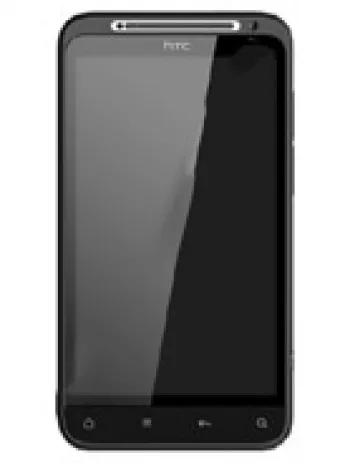
Overview of HTC S620
The HTC S620, also known as the HTC Excalibur, is a phone that was launched in 2006 at a time when the smartphone market was rapidly evolving. It is particularly notable for its combination of a QWERTY keyboard and compact form factor, which catered to a particular segment of consumers who valued efficient email communication and messaging. The device runs on Microsoft Windows Mobile 5.0 Smartphone edition, which was a popular operating system for mobile devices during the mid-2000s. Let’s delve into the comprehensive details of this device.
Design and Build Quality
The HTC S620 has an ergonomic design which measures 111.5 x 62.5 x 12.8 mm and weighs approximately 130 grams, making it a lightweight and portable device for its time. It sports a sleek form factor with rounded edges, and its dimensions allow for a comfortable grip, making it easy to hold for extended periods. The device is equipped with a QWERTY keyboard, a feature that made it appealing to business users and those who often type emails or messages. The keyboard allows for quicker text entry compared to the T9 keypads that were common on mobile devices at the time. The materials used in the S620’s construction are of reasonable quality, providing durability that was appreciated by users.
Display Characteristics
The HTC S620 features a 2.4-inch TFT display capable of displaying 65K colors with a resolution of 240 x 320 pixels. This provides a pixel density of approximately 167 ppi, which may seem modest by today’s standards but was sufficient for basic tasks such as reading emails, browsing contacts, and light internet browsing. The screen occupies roughly 25.6% of the front body, surrounded by the physical keyboard beneath and navigation keys above it.
Operating System and Performance
Running on the Microsoft Windows Mobile 5.0 Smartphone OS, the HTC S620 offers a range of applications typical of Windows devices at the time, including productivity tools like Pocket Office (Word, Excel, Outlook) and basic multimedia capabilities. The device is powered by a TI OMAP 850 chipset featuring a 200 MHz ARM926EJ-S CPU. While this setup seems rudimentary today, it was adequate for managing basic applications and tasks that the typical business user would perform.
Memory and Storage
The HTC S620 comes with 64MB of RAM and 128MB of ROM, and it includes a microSD slot for expandable storage, allowing users to store additional data such as documents, photos, and software beyond the internal capacity. This flexibility was particularly important for users who needed to carry work-related data with them.
Camera and Multimedia
Equipped with a single 1.3 MP rear camera, the HTC S620 can capture basic images. While the camera performs adequately for simple shots, it lacks advanced features and low-light performance. Video recording is also supported, which adds to its basic multimedia capabilities. The lack of a secondary selfie camera is notable but reflects the device's target market and usage priorities at the time of release. For audio, the device supports downloadable polyphonic and MP3 ringtones and loudspeaker functionality, but it lacks a 3.5mm headphone jack, relying on its proprietary USB for audio output.
Connectivity Options
The HTC S620 supports several connectivity options, including GSM four-band technology that covers GSM 850/900/1800/1900 bands. Data connectivity is supported through GPRS and EDGE Class 10. Additionally, the device is enabled for Wi-Fi (802.11b/g) and Bluetooth 2.0 with A2DP, which provided alternative options for internet access and wireless communications. However, GPS and FM radio are not included, which may limit certain geographical functionalities.
Battery Life and Power
Powered by a removable Li-Ion 960 mAh battery, the HTC S620 delivers a standby time of up to 220 hours and a talk time of up to 5 hours, which were decent figures for the time of its release. The removable battery design allows users to carry spare batteries for extended use, especially useful for business travelers or users in areas with limited access to charging facilities.
Market Position and Historical Impact
At the time of its release, the HTC S620 was priced around 240 EUR, rendering it a mid-range offering within the smartphone market. Its combination of a full QWERTY keyboard, Wi-Fi connectivity, and a reasonable price made it an attractive choice for professionals seeking capable mobile communication tools. Given its features, the device played a role in facilitating mobile productivity during a crucial period in the expansion of mobile communications technology.
Legacy and Discontinuation
The HTC S620 has since been discontinued, as smartphones evolved rapidly with more powerful hardware and advanced operating systems. Nonetheless, it remains an interesting example of a device that catered to a segment seeking reliable communication solutions integrated with Windows Mobile's familiar interface. Its design elements and user interface laid groundwork for future mobile device innovations, particularly in integrating QWERTY keyboards with compact mobile devices.
Key Features of HTC S620
- Compact and lightweight design (111.5 x 62.5 x 12.8 mm, 130 g)
- QWERTY Keyboard for easy typing
- 2.4-inch TFT display with 65K colors
- Runs on Microsoft Windows Mobile 5.0 Smartphone OS
- Wi-Fi 802.11b/g connectivity
- Bluetooth 2.0, A2DP support
- Expandable storage via microSD card
- Removable Li-Ion 960 mAh battery with up to 5 hours of talk time
HTC S620 Drawbacks
- Outdated operating system: Microsoft Windows Mobile 5.0 Smartphone.
- Low processing power with a 200 MHz CPU.
- Limited RAM (64MB) and ROM (128MB) capacity.
- Lack of a front-facing camera for selfies.
- No 3.5mm headphone jack for standard audio connections.
- No GPS functionality for positioning.
- Absence of FM radio feature.
- Proprietary USB connection instead of standard micro-USB or USB-C.
- Low-resolution camera (1.3 MP) compared to modern standards.
- Discontinued status, making support and parts replacements difficult.
- Limited display size with lower screen-to-body ratio (~25.6%).
- Only supports GSM networks without 3G or 4G/LTE capabilities.

View Also
More Phones
All Rights Reserved +14266 Phones © Mobilawy 2025

























